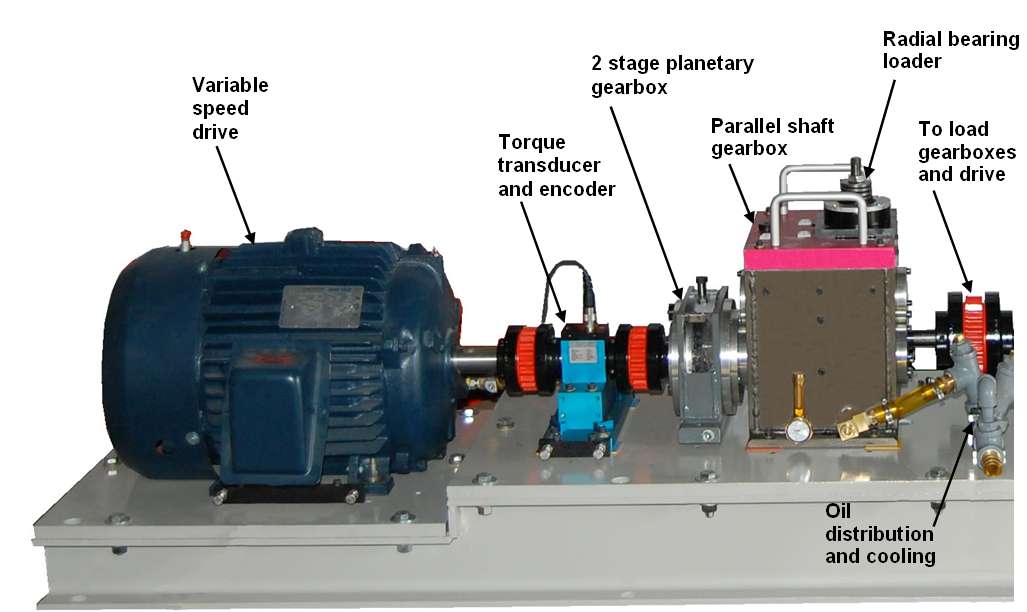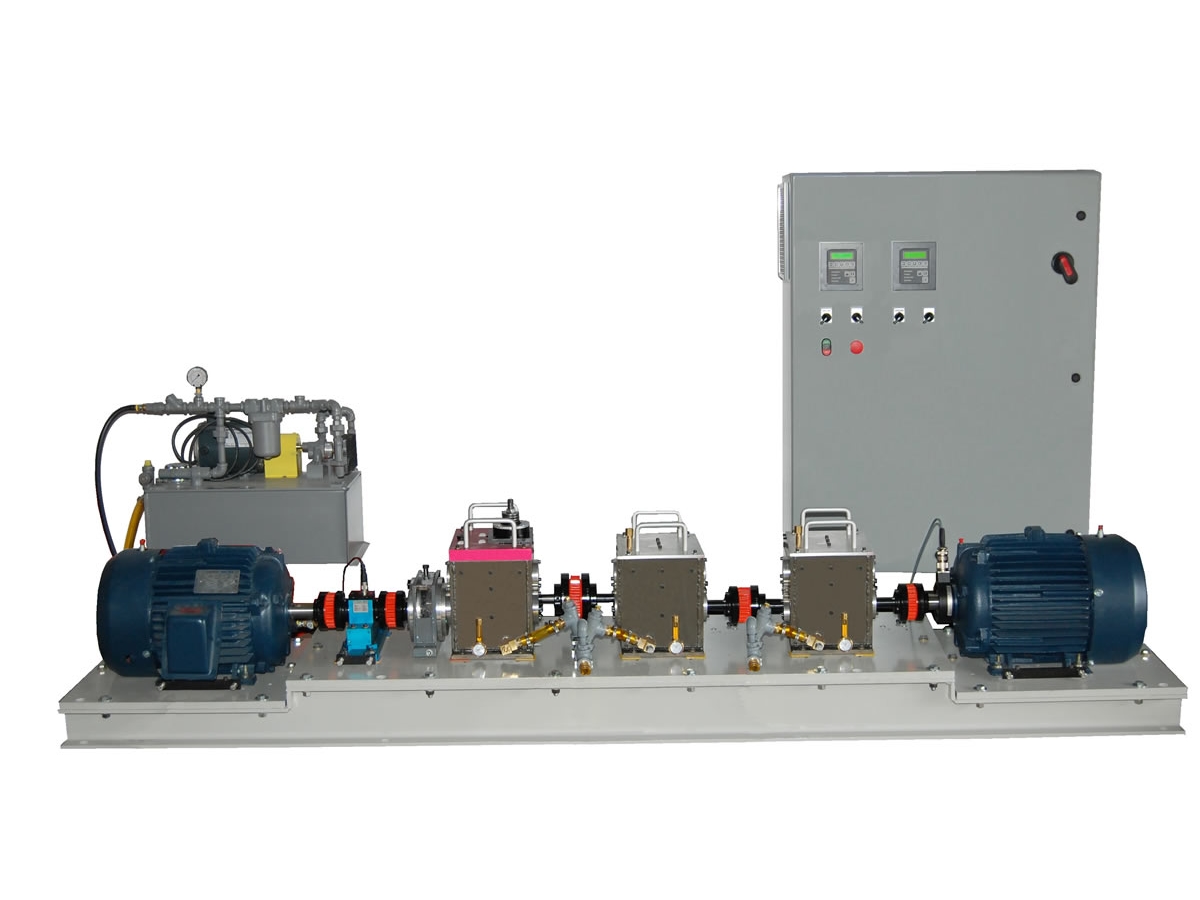Features
- One 2-stage planetary test gearbox 27:1 ratio.
- One 2-stage oil-lubricated parallel shaft test gearbox up to 6.25 ratio.
- Planetary and parallel shaft gearboxes re-locatable to induce damage in either test gearboxes.
- Torsional and radial variable speed loading.
- Gears can slide along the parallel shafts to alter system stiffness and make room for additional devices.
- Parallel shaft gearbox adaptable to spur or helical gears and to rolling element bearings or sleeve bearings.
- Intentionally damaged or worn gearing can be fitted to study the effects on vibration signature.
- Alterable backlash by replacing bearing mounting hubs to provide the desired clearance.
- Modular design makes the introduction of faulted bearing and/or faulted gears an easy task.
- Load drivetrain consist of one 3-stage and one 2-stage oil-lubricated parallel shaft gearboxes providing up 98:1 ratio.
- Multiple mounting locations provided for installation of various transducers.
- Develop diagnosis and prognosis techniques and advanced

The DPS is Heavy-Duty and Easily Configurable
The DPS design enables changing gearbox and bearing components quickly and easily. The parallel gearbox is adaptable to install either rolling element bearings or oil-impregnated sleeve bearings with either spur or helical gears. The modular design makes the introduction of faulted bearing and/or faulted gears an easy task.
Transducers and DAQ
The drivetrain is designed to accommodate different types of sensors easily. Accelerometers can be installed on the gearboxes and on the bearing housing to measure the vibrations in all three directions. A torque meter enables precise load measurement. The input and output shafts can be fitted with encoder or tachometer to measure the transmission error or for time synchronize averaging. Other transducers can also be installed per customers’ request. Data acquisition hardware and software are also available from Spectra Quest and ready to do time domain and frequency domain signal analysis.
High Value Combination Packages
The DPS is available in high value combination packages focusing on bearing and gear studies.
| Package # 1 : | Basic DPS + Kits for in-depth studies of bearing and gear diagnostics concepts |
| Option kit | | PKG 1 |
|---|
| Parallel gearbox bearing fault kit | G-BFK-1 | x |
| Planetary Gearbox Bearing Fault Kit | G-BFK-P | x |
| Parallel gearbox oil-impregnated sleeve bearing | G-SBH | x |
| Defective spur gears | G-SDG | x |
| Eccentric Spur Gear | G-ESG | x |
| Helical gears set | G-HG | x |
| Defective helical gears | G-HDG | x |
| Defective planetary gears | G-PDG | x |
| PC Motor and Load Control Kit | G-PCMLK | x |


